the winds of Rate they still bring back memories of that maritime city which, in its eagerness to conserve the sea, during the 1st-5th centuries after Christ was one of the producing areas of salting and garum (fish sauce) most famous of the Roman empire.
The newspaper library Claudia Baelo, in the Cadiz inlet of Bologna, lavish archives that attest to the deep-rooted conservation of fish in salt since that time. The remains of the old factories of this Archaeological set merge with some areas of the Bologna beach. The Romans called them cetariae, and they were the factories dedicated to the process of drying and salting fish. Today there are about a dozen and the traveler who likes can tour the pools or salt pans in which the ancient Romans macerated the fish in salt and elaborated the garum.
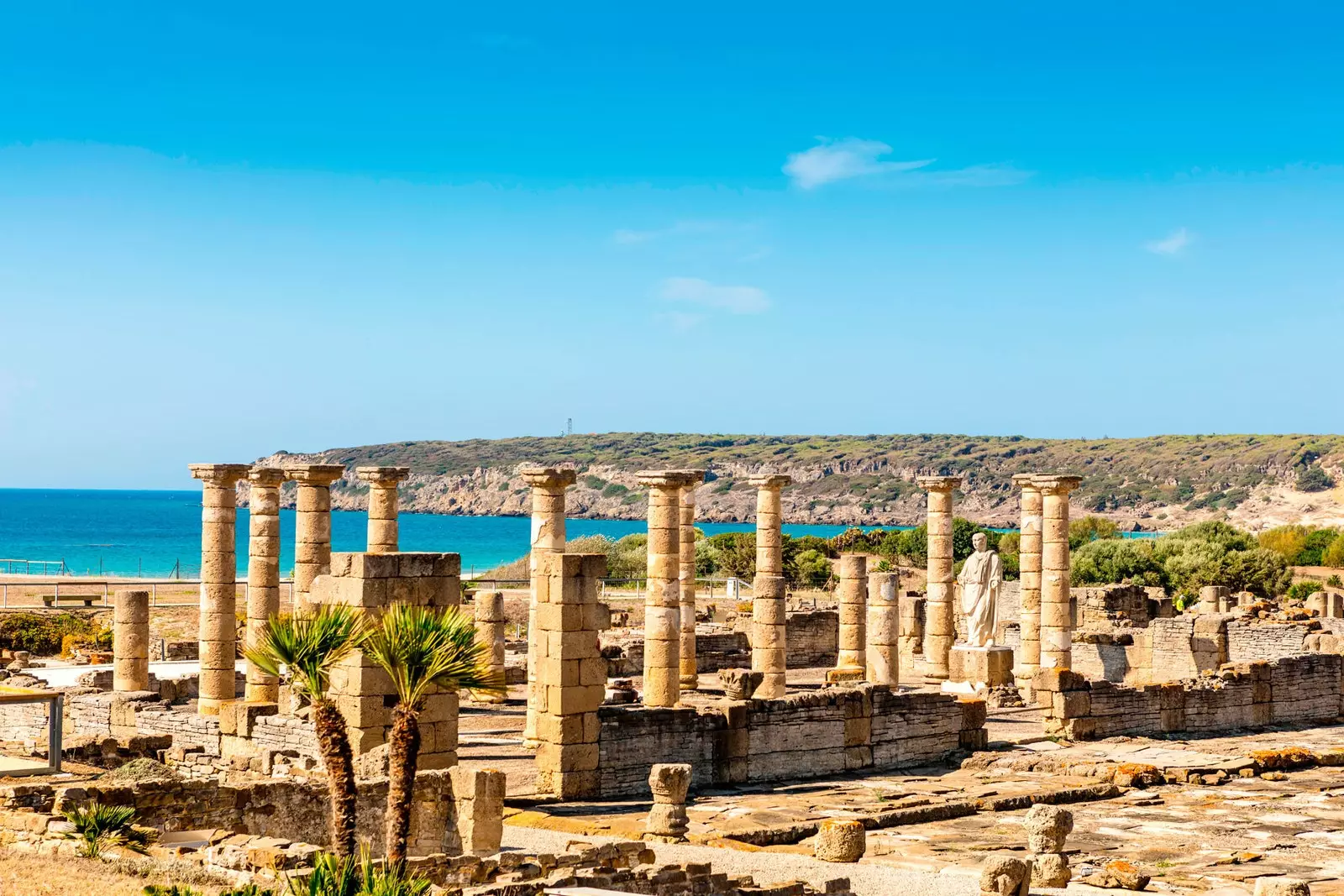
Baelo Claudia, Tarifa, Cadiz.
Some documents even cite whale salting, but what does appear as a common denominator is that the conditions of the Cadiz coast have always been bluefin tuna fishing area when he was doing his annual migration from the Atlantic to the Mediterranean. Baelo Claudia, one of the best expressions of Roman urbanism, thus became one of the pantry cities of almadraba tuna and its subsequent preservation in salt. His strength was such that it reaches our days, until the bars and taverns from the entire province.
In Cadiz capital, Juan Carlos Borrell and his wife, María José Muñoz, They run one of those taverns full of hearth. It was called a The surprise and it is an office of wines and salting with the spirit of old grocery store. “We open it in the 2013 Carnival, and as an old chirigota says, I don't have a birthday, here we only count Carnivals”, says Juan Carlos.
Today La Sorpresa has just completed its nineth anniversary after the reopening (although it was founded in 1956) and every day it tries to give value to the very salt of the earth, literally and metaphorically. “Not only do we have generous wines, there are also our Wines from the Land of Cádiz. When you go to places, you have to drink the zone and my philosophy is to base myself on what is ours”.
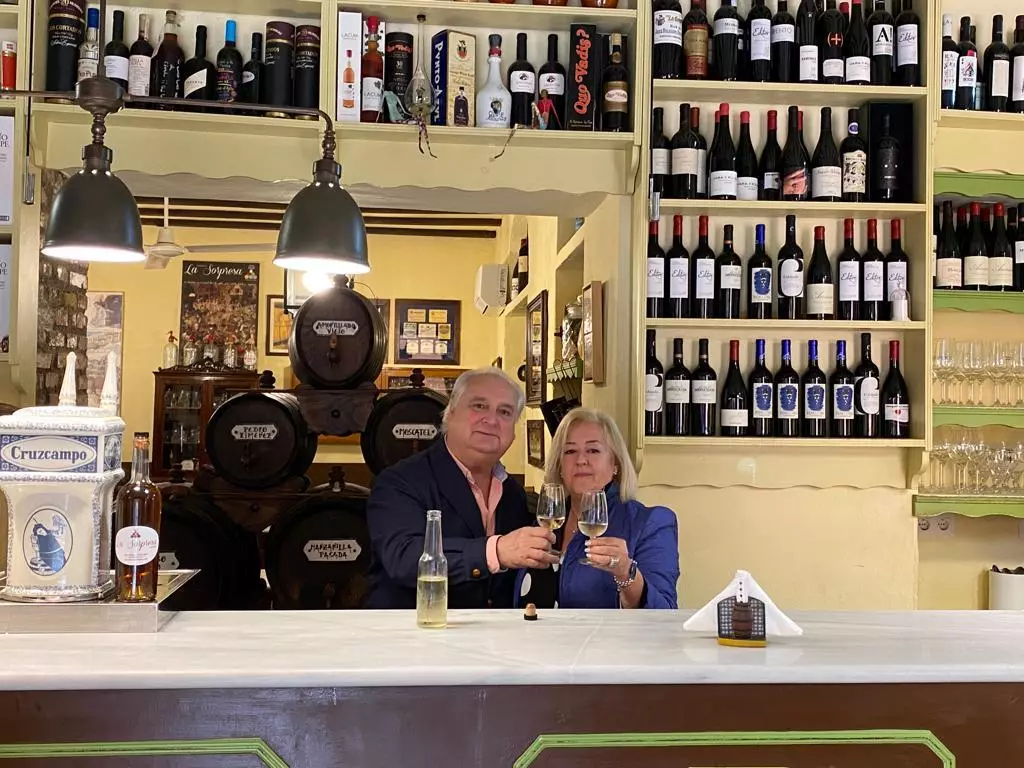
Juan Carlos Borrell and María José Muñoz, La Sorpresa, Cádiz.
Theirs, that of María José and Juan Carlos, is about offering the Cadiz coasts impregnated with salt. "We work fundamentally with tuna from the traps on the Cadiz coast, where there are only four left: Zahara, Rate, barbate Y Conil. Also with all the genre that we select from the different towns that travel the coastline of the Gulf of Cadiz. sarda, albacore or little tunny (also known as bonito from the south), a smaller tuna that always appears on the bar of this marriage. All converges, like the waves of the sea. The almadraba, the nods to the garum, which, as Juan Carlos says, “has always been here. Everything is linked to the tavern, like in those Roman taverns where wine was already served with salted fish”.
It is noon and in La Sorpresa Juan Carlos waits after the marble counter to honor his name. “We have bonito, both from the south and from the Bay of Biscay. Cured and semi-salted, I put it in a very fine bread, toasted at the moment Then there is the salted tuna, the almadraba tuna mojama. The Red tuna Almadraba has a sweet touch that, when salted, is a masterpiece next to a glass of amontillado, chamomile or odorous from one of our boots.” In this tavern of slow talk and magic in the air, Juan Carlos insists on keeping the mid-morning aperitif. "Mine is a bit of Little tunny with half straw or a glass of Manzanilla. That tap It's kind of permissive."
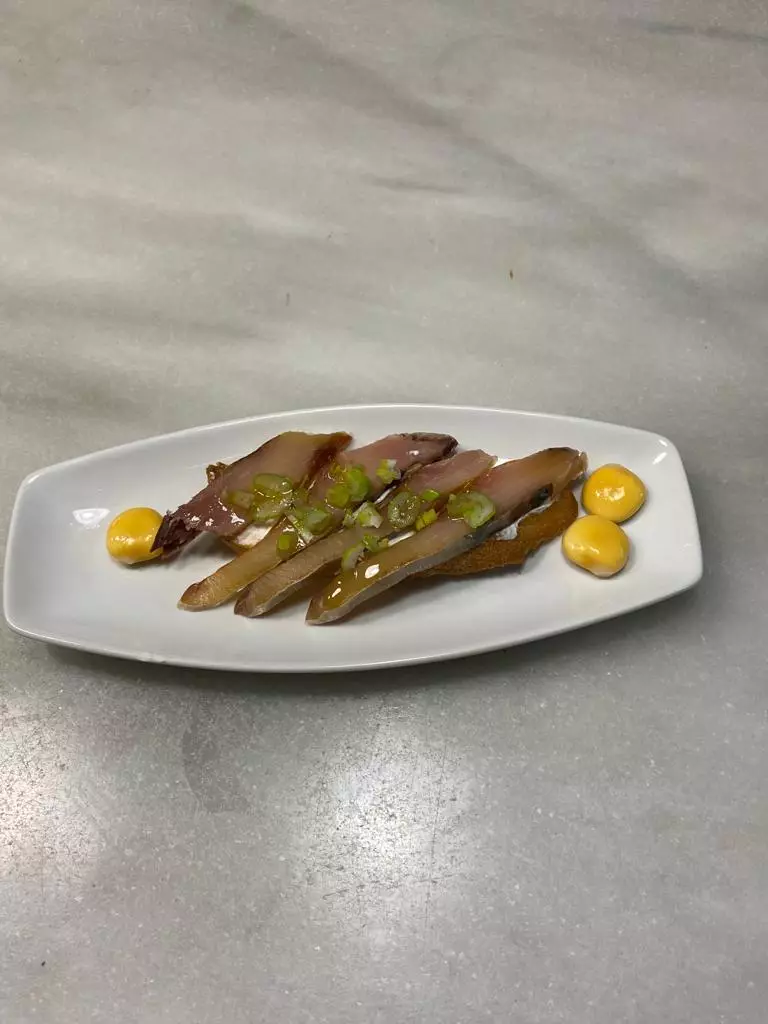
Semi-cured tuna loin from the north in La Sorpresa, Cádiz.
His tavern is now a museum, with some boots a hundred years old, which Juan Carlos had recovered from Sanlúcar de Barrameda. Fine or Passed Manzanilla to accompany some good ling roe extra natural. "Or some semi-salted mullet roe or more cured, which are amazing. And how could I not have the almadraba bluefin tuna grain roe, which is like putting the sea in your mouth, although somewhat more expensive”.
Another appetizer: a Oloroso with little tuna or albacore (sardinian) in loins, semi-cured, “another flavor that offers you the hints of a good Cantabrian anchovy, but that comes from the waters of Barbate. With some pine nuts from La Breña, it's something sublime". The art of Juan Carlos and María José goes through leave the sarda in oil, drain it and then, a few drops of Arbequina to maintain the shine. "The sailors eat it with a piece of bread and raw pepper on the boats, but I prepare it on a slice of bread, a very thin tomato fillet and two sardinian fillets. Tremendous". The salted fish menu by Juan Carlos and María José ends with some cured mackerel roe. “Chiquitillas, from Murcia” or fish fly, that Juan Carlos buys at various points: in the Campo de Gibraltar, in Algeciras or La Línea.
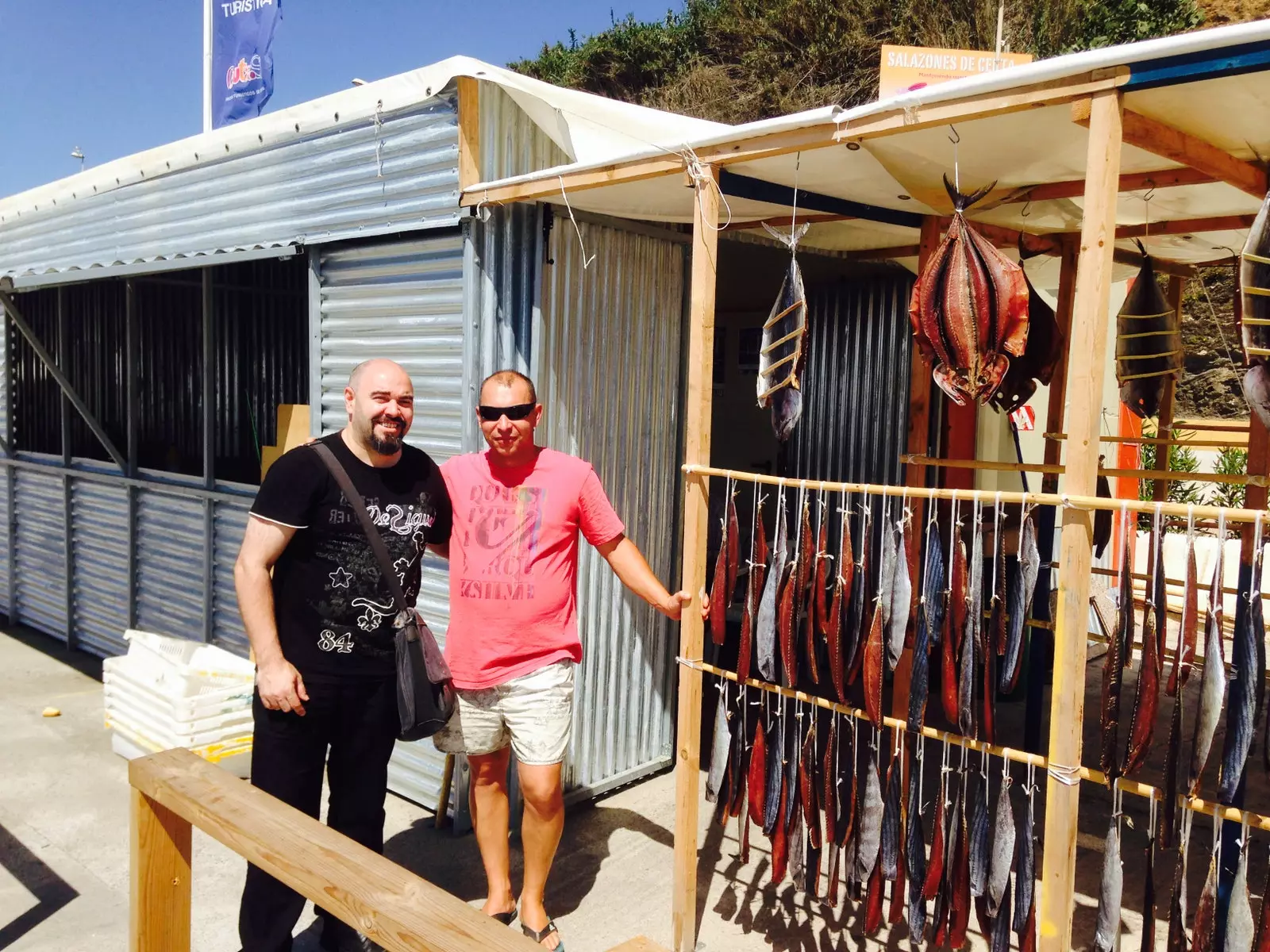
Francisco Ramón Sánchez, Grand Cru sommelier, and Ricardo Díaz Carmona, owner, at Secadero Goroztiza, Ceuta.
That flying fish from the Strait is the one that move the heart of salt in Ceuta lands. Here its almadrabera history today is told through few redoubts, but although limited, all of them are necessary to keep a tradition between historical and romantic. Keke Raggio is, along with Jose Manuel Perez Rivera and the chef Mario Silva, coordinator of the Salzone Project "Salazones de Ceuta", an initiative that seeks to safeguard a sustainable tradition with which they want to create a network of salting cities from Spain.
“The culture of salting is found in Ceuta in danger of extinction. Marine resources have been overexploited and the fishing sector it has largely disappeared, but not all is lost”, says Keké. As this project says, the idiosyncrasy of the people of Ceuta is that of the people of the sea, the salt of the earth, So powerful to maintain this job, that of the master salting fish, artists of improvised conversation and the adventurous character of the sailors.
The people of Ceuta tell Condé Nast Traveler that the canneries around their tuna traps they remained active until 1970. “The drying season for salted fish in Ceuta begins between April and May, with the migration of large tuna that come to the Mediterranean to spawn. they are called traps of law, which are the ones that specialize in catching tuna. The other migration is the one that begins at the end of August and during the month of September, which is when the tuna has already spawned and begins its journey back to the cold waters of the North Atlantic. We call these almadrabas backwards”.
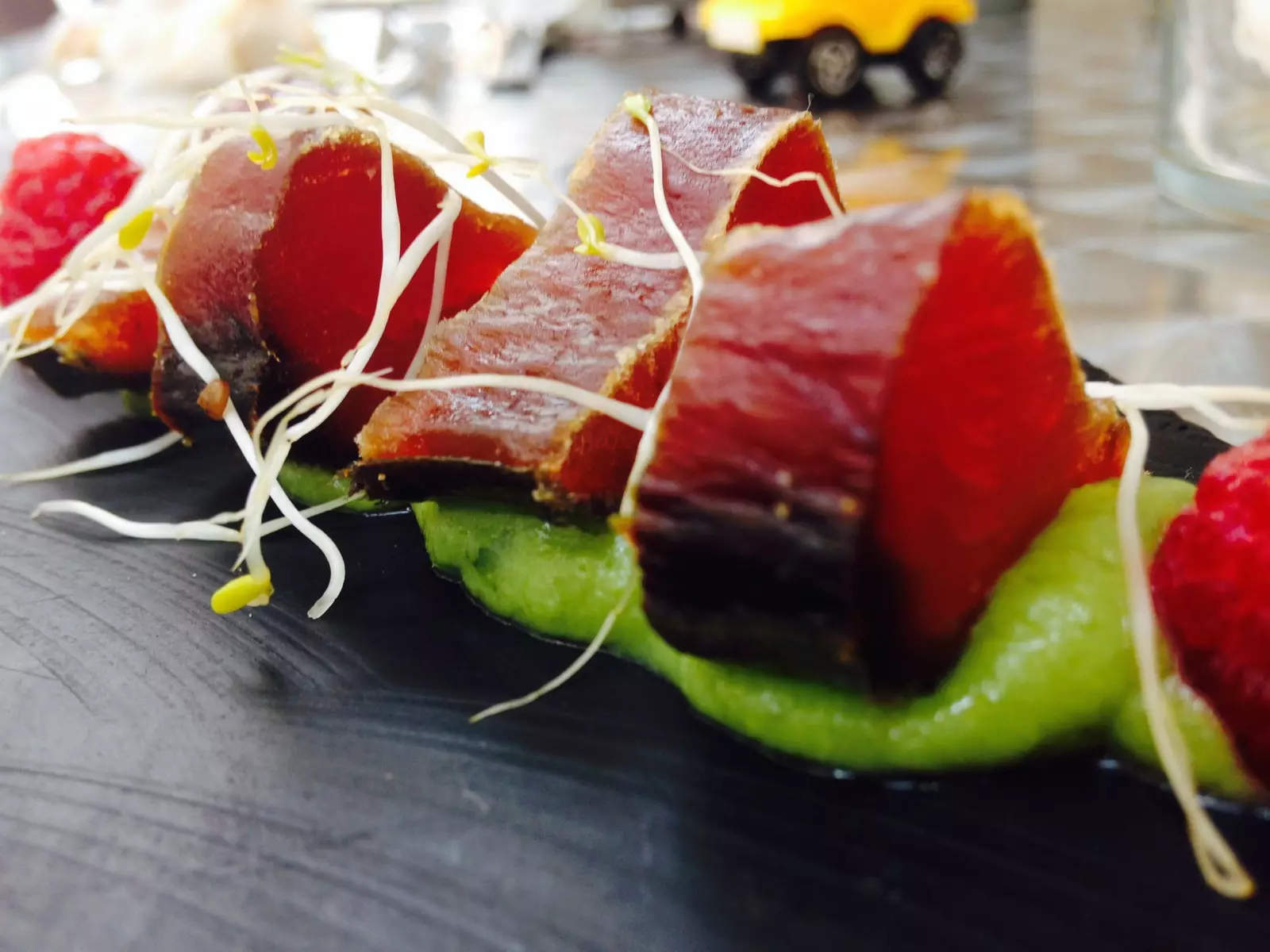
Slices of salted tuna loin on guacamole with raspberries, spring onion and Ceuta Star beer.
Today in Ceuta there is no quota to catch tuna, but they have their almadrabeta in the southern bay of the city (smaller than the traps from Cadiz). “From May to December they catch small tunas such as bonito, albacore, enlisted... They all supply the dryers in summer and at food market from the city". In Ceuta tuna are salted as the beautiful mediterranean (from one to three kilos), both whole or the loins separately, open in butterfly. “Then there are the tuna roe, The most expensive product, from 80 to 90 euros per kilo”. But if there is a traditional fish in Ceuta, that is the flying fish, the volaor, as it is known in these parts. "Traditionally his capture begins with the feast of the Virgin of Carmen (around July 16) and from then on, in the month of August there is a lot of this fish, which is the last to be dried”.
Between May and September, the so-called esplanade of Juan XXIII, Next to the homonymous neighborhood, the city of Ceuta reveals its most authentic photo: the men and women of Ceuta hang the pieces of flying fish with ropes, sheltered from the winds of the Strait. “Depending on the type of piece, the drying time varies. If there is a Levante wind, the one that blows from the Mediterranean towards the Atlantic, there is more humidity and then the fish is drying from the inside out, so the process is slower than when Poniente blows, which is cooler and dries the fish from the outside in. ideal is that there is a balance between the two so that the fish is neither too dry nor too wet”. Always arranged in reeds, those that are seen on the Ceuta beaches of bird roost, and that, in the Ceuta dryers, they hook from side to side of the fish skin.
In Ceuta, fish is still is auctioned at the open voice in the fish market and in many cases, in pesetas. It is also a faithful tradition to go to the dryer and order the open tuna to pick it up. “Today still it is written on the skin of the bonito the name of the client with a marker, to indicate that this piece is already taken”.
Laces, octopus, melva, or even heavier tuna such as the enlisted ones are also seen in the volaeras, the terraces where the fish is dried in Ceuta lands. “Today there are still some individuals who dry on top of the terraces of their houses, yes, with the permission of the yellow-legged gulls, which are authentic fish thieves" John tells.
Today in Ceuta they cross their fingers so that the Salzone Project keep on giving visibility to this sublime guild. Also proper names like Hugo Ruiz, chef at Bugao and Piscolabis in Ceuta and Bugao in Madrid, Ceuta of origin and heart, continue to tell their city through the plate. “One of our most successful recipes are our Free-range fried eggs, garlic prawns and salted almadraba tuna with our warm butter croissant. We finish it at the table in front of the client. It reflects very well that culture of salting that exists in Ceuta and for this reason, it has become one of our star dishes”.
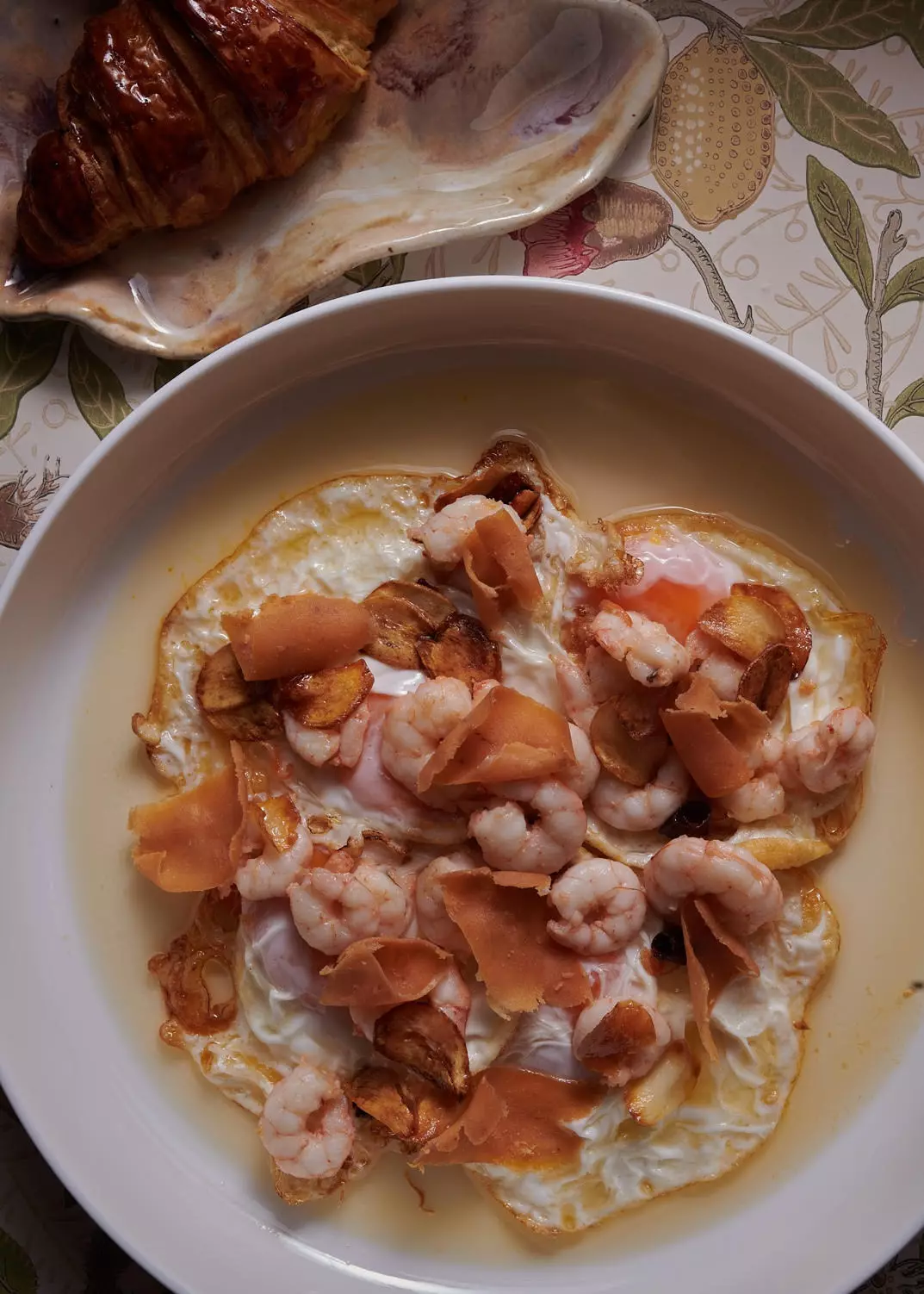
Fried free-range eggs, garlic prawns and salted almadraba tuna with a hot butter croissant at Bugao, by chef Hugo Ruiz, Madrid.
maybe the generational relief is closer, and the volaeras have the necessary support to continue giving salty photos to the world, counting that culture of conserving the sea that made Ceuta so great and whose legacy today still kick with more force than nostalgia.
Salting has also been part of the social chronicle in the Canary Islands. “Lanzarote may have been the fishing port most important of the archipelago. The fishing area was what was formerly called "Canary Bank - Saharan", between the coast of the Sahara and about twelve miles towards the Canary Islands, considered one of the most productive fisheries in the world.
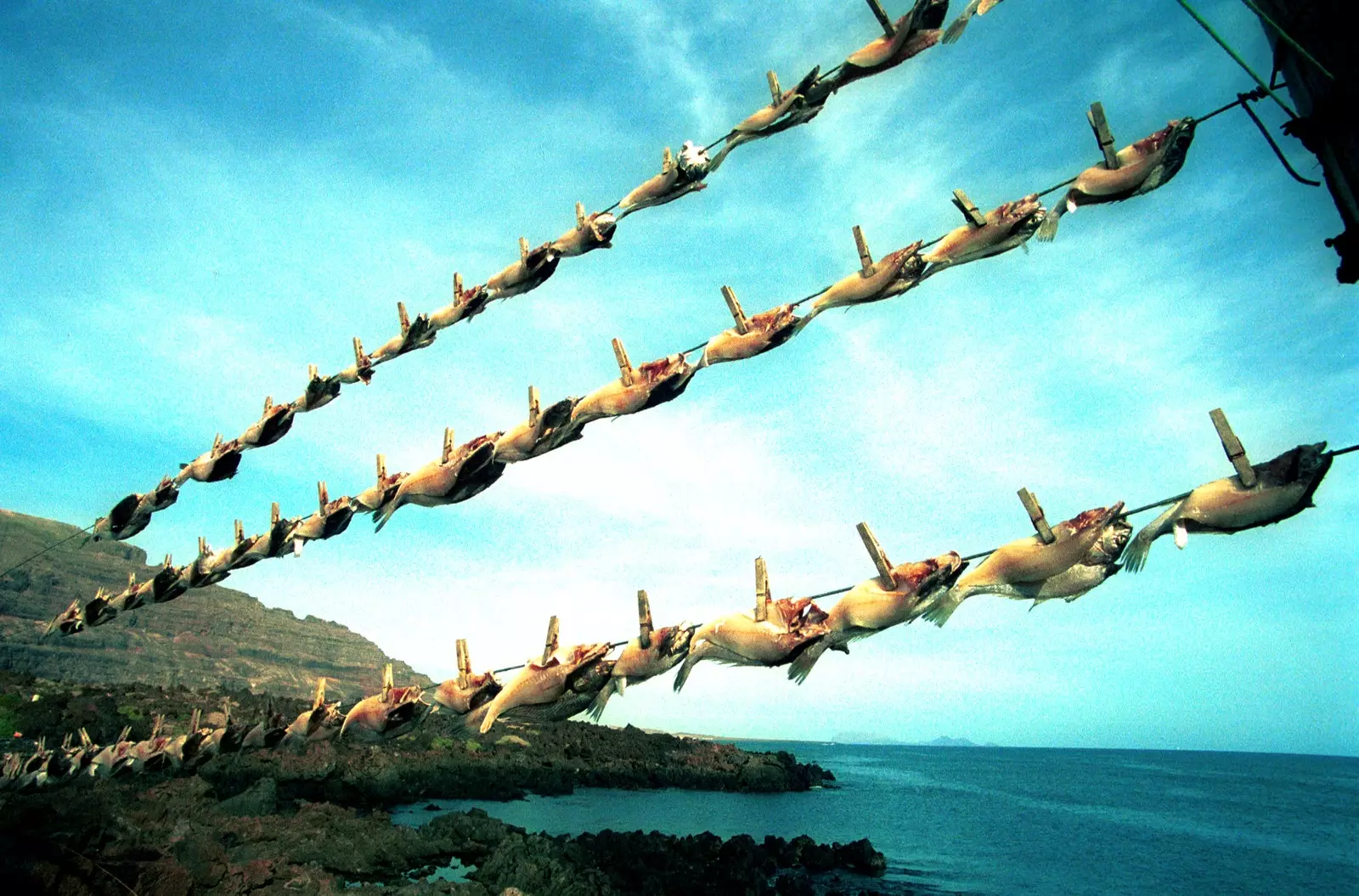
Traditional Jarea in Lanzarote.
There the boats worked for long seasons, and the only way to keep the fish was, either salted (the larger ones) or jaring it and drying it in the sun, in the case of the smallest”, they tell in Saborea Lanzarote. The kings of the Lanzarote Atlantic are from large species such as corvina, grouper or burro with small fish, that go on a bench, such as the shoe, the chopa or the salema. “We have to distinguish here the jareado, a technique for cutting fish that allowed, well salt it for preservation (in the case of large pieces) or dry it in the sun for small pieces, although it is true that in Lanzarote culture when talking about jareado fish they refer to sun-dried fish for 15-20 minutes. We would say that salt is present in jarea, but it is not decisive. It is a technique intertwined with salting, but with a different modus operandi.
Techniques all of them that advanced from the girl fishing (with reeds), salting the fish in the boats themselves, fishing for larger species. Rods, trammel nets (cross nets) or long lines were part of the day-to-day Lanzarote fishermen, where on many occasions the Basque shipowners were their guides in this learning. The men in the sea. Women marketing the salting within this island with a volcanic heart. Today, in Lanzarote, the diversity of salt flats throughout the land speaks of that history. “According to the sources, the first salt flats here could date from before the First World War. Then, in the 1980s, sardines in brine boomed. The GDP of the economy of Lanzarote came through the sardine sector.
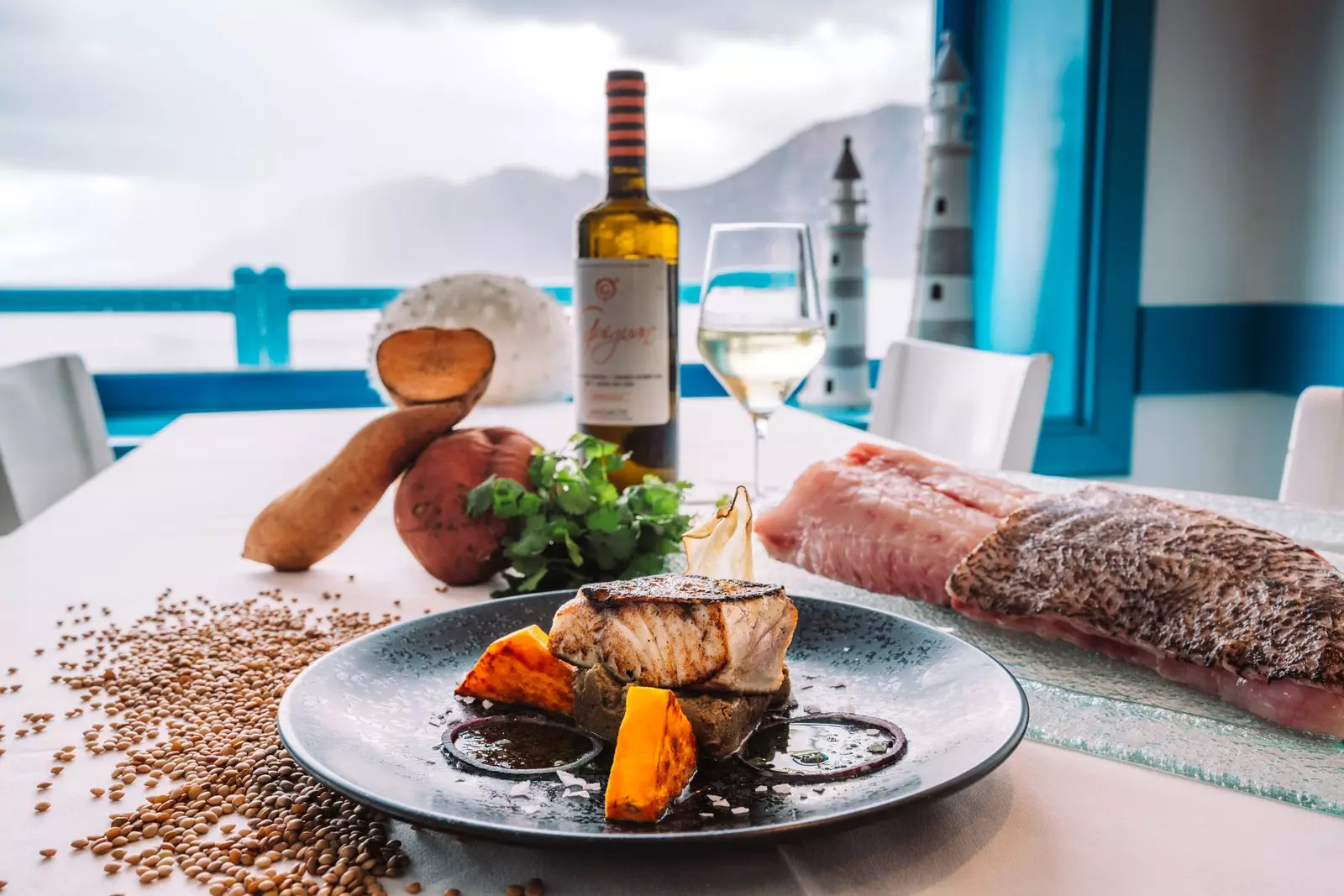
Cherne in El Risco, Famara, Lanzarote.
Today, throughout the year, the artisanal fleet from Conejo mainly collects white fish and tuna, such as Canary Bigeye (bluefin tuna). “There is also an inshore fleet, which captures other species that are very much ours, such as the old, horse mackerel or salema. Although less and less, because conservation methods have evolved, although you can still see the jarred and salted fish”. This salting is then sold in the fish markets and markets of the island. “Almost everything is sold in Lanzarote, driven above all by the tourist activity”.
But always under the trade winds, with the memory of those women jareando the fish on the beaches that today still survives in the port grills. Creating an identity, a legacy. Connecting the people of this small island, ingraining its history.
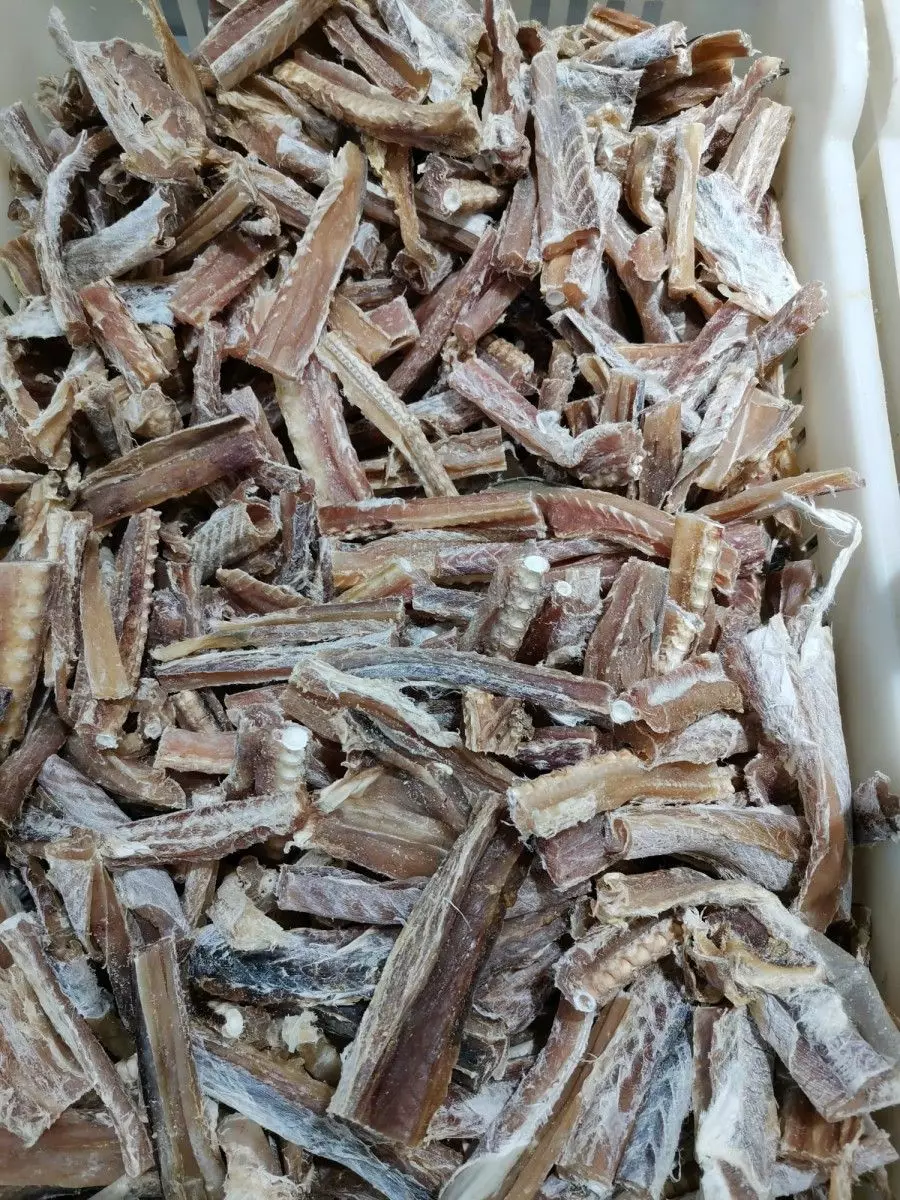
Dry tollo, Tenerife.
in Tenerife, the jareas of old women coexist with the oreo of other species such as samas or salemas. according to account Fran Belin, Pro journalist from Tenerife, “the fish are taken to the dock to prepare them and then they are put to dry in the boulders of the beach". The method is the same as always. “Once the fresh fish is caught, the viscera are removed, it is cleaned very well, it is descaled and washed with sea water. There it is left for a little while, in some container, to do the same subsequent washing operation again”.
Then, the sublime image: that fish in the process of dehydration is placed on clotheslines on the beach, 100% natural, such as reeds and endemic species that scent the environment. They are also placed in metal cages, From whose ceilings hang pieces of cloth or plastic that, swaying in the breeze, scare away possible insects from the fish.”
He says Jose Manuel Ledesma official chronicler of Santa Cruz de Tenerife, that coastal fishing was done in the past with small rowing boats calls in the chinchorros islands. "Salted fish and jareado was part of the diet of citizens." As in Lanzarote, the Banco Canario - Sahariano was from the beginning of the 20th century usual fishing ground for Tenerife fishermen. The factory had its operations center here Fisheries and salting of Tenerife, a prologue that would later be followed by other salting companies through the narrow streets of Santa Cruz.
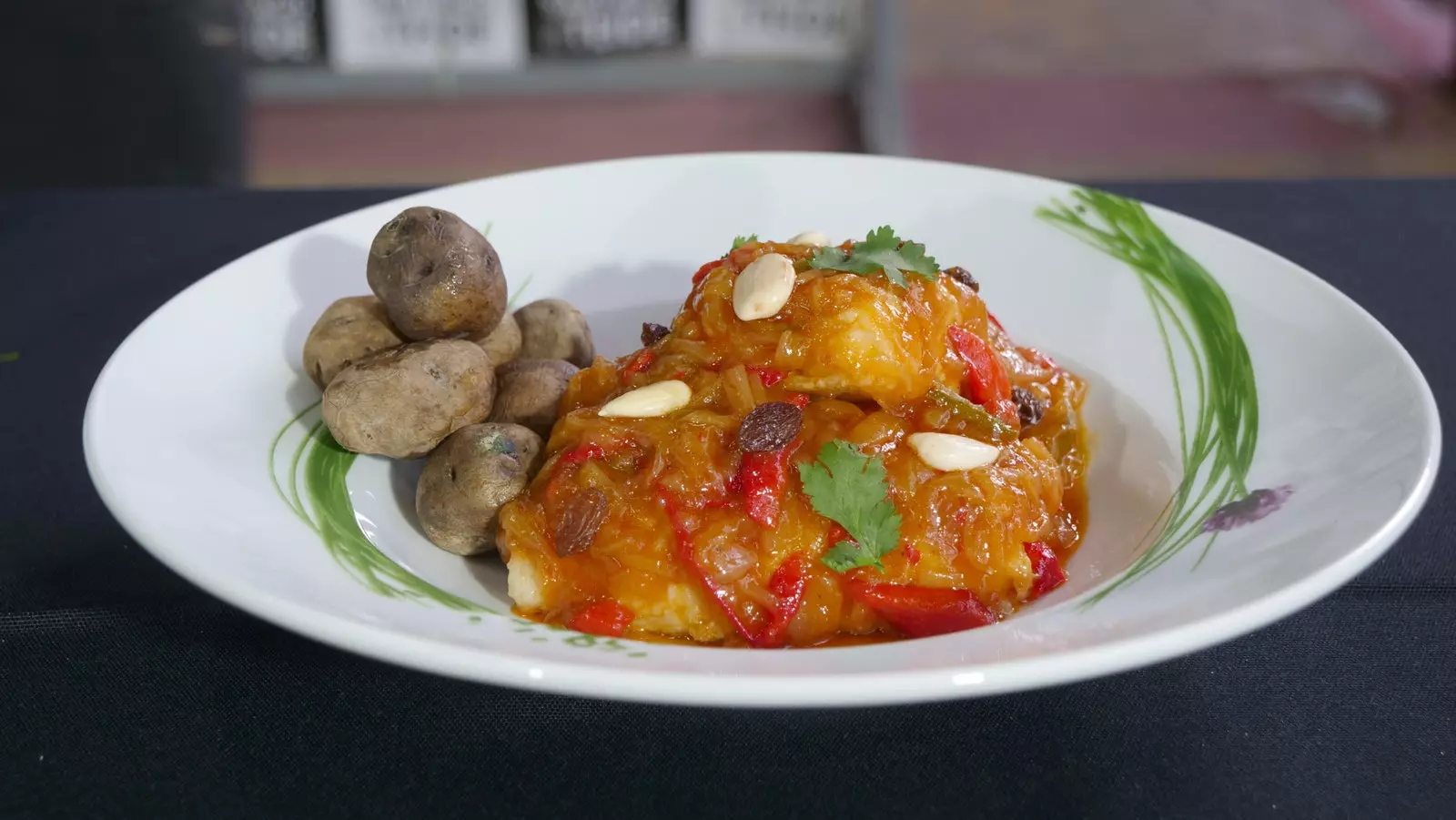
Salted stew from Pablo Pastor, Tenerife.
Flours, oils and preserves of fish coparon in Tenerife the gastronomy of salt, as in much of the Spanish coast. Fishing boats Inshore and high, the jewels of the sea have always been distributed, which then end up in the fish market. Donkeys, sargos, sea breams, conger eels, chopas or samas which will then be jareadas or aerated (depending on the size) with the Canarian accent as a background echo of the auctions in the fish market.
according to account Pablo Pastor, chef and president of Acyre Canarias, “before the salting, there was already the jareado. We do it with smaller species, which are previously cleaned in salt water, they are put in salt for 15-20 minutes and hang it to the air with ropes. We have done it more in homes than in restaurants because it is linked to survival food. Note that, as there was no fridge, the salted fish was a basic resource.
Canary Islands, surrounded by sea, but up to a hundred years dependent on the earth. “Our grandparents fed more from crops than from fish. But when salt began to move the Canarian economy, almost everything began to salt. Corvina, grouper. “This last one is the female of the mere, here we also call her Aphrodite. Vieja, sama, the bream, the corvina or the abbot”. As in some of the regions that have starred in our salting route, today this is a residual industry.
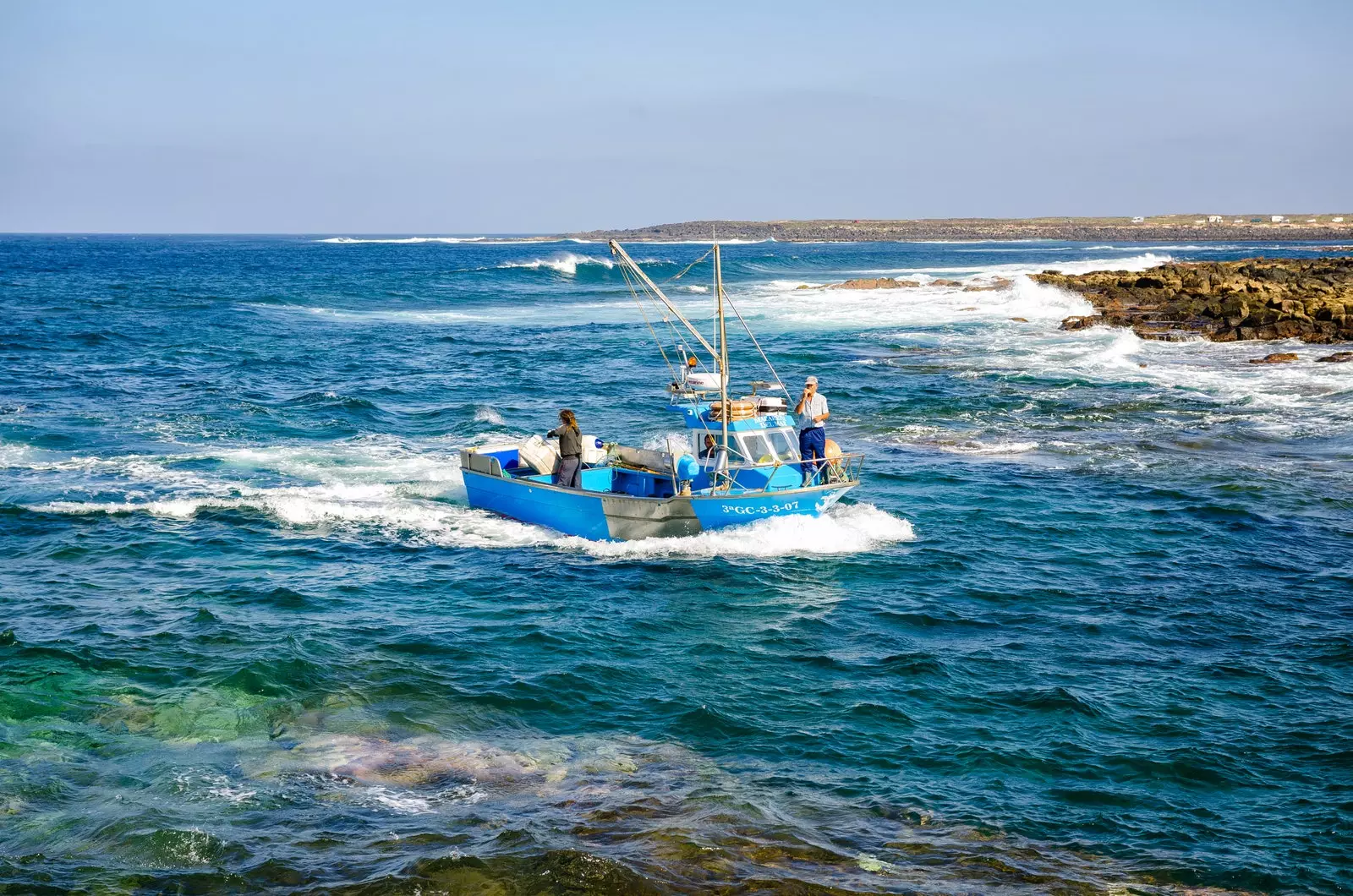
Fishing boat in Lanzarote, Canary Islands.
“Salted fish is a traditional theme linked above all to our elders. In the south of the island it is not easy to find salted fish, so We make it with onions, we accompany it with wrinkled potatoes, mojo sauce and pepper”.
Even so, the much-needed attachment to the land has made recipes like canary tollo continue intoxicating stomachs and hearts. "Is he shredded shark salted, whose strips are dried and hung in the sun. It is eaten dry, in sauce or with mojo”. Greek mythology tells that there was a place where all the good souls after his death. That place was the Canary Islands, the same paradise that, with the permission of the Greeks, awaits in life full of sun and salt.
